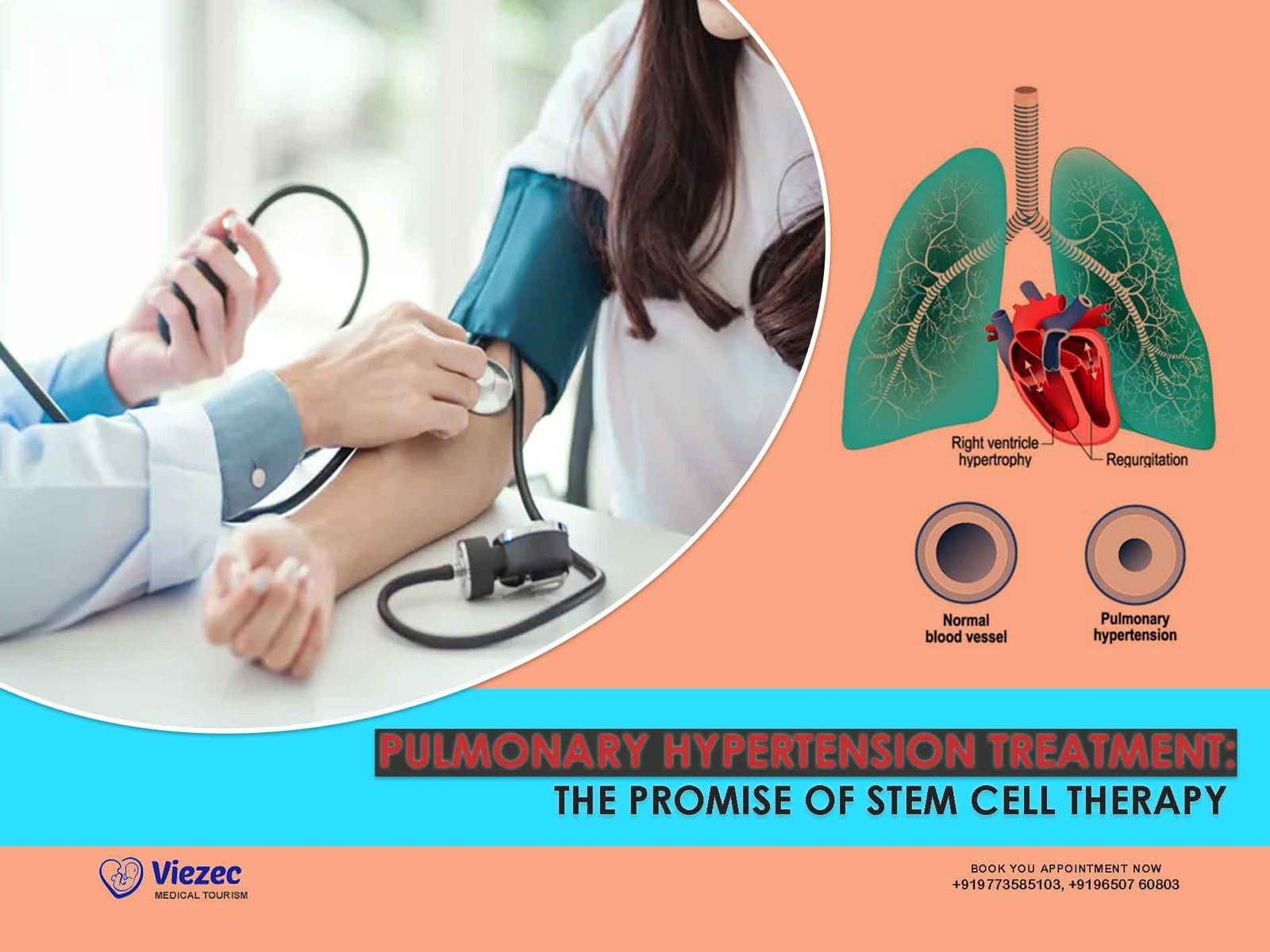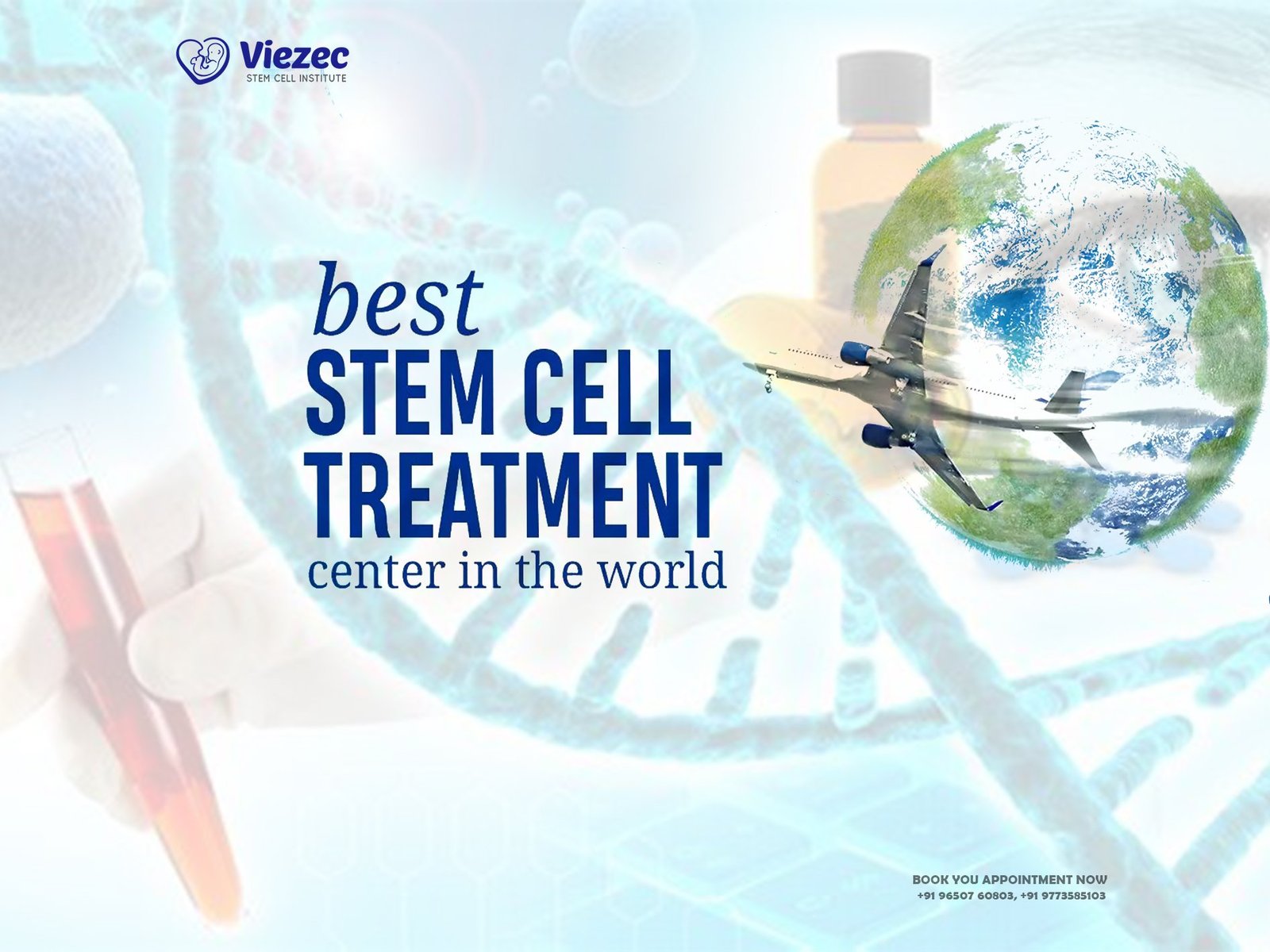Pulmonary hypertension (PH) is a debilitating condition characterized by increased blood pressure in the arteries of the lungs. It leads to various symptoms such as shortness of breath, fatigue, chest pain, and in severe cases, can even be fatal. Traditional treatments for PH focus on managing symptoms and slowing disease progression, but they often fall short in providing long-term relief and improving patients’ quality of life. However, the emergence of stem cell therapy holds promise as a revolutionary approach in the treatment of pulmonary hypertension.
Understanding Pulmonary Hypertension
What is Pulmonary Hypertension?
Pulmonary hypertension is a complex and progressive disease that affects the blood vessels in the lungs. In a healthy pulmonary circulation, the blood vessels in the lungs are relaxed and open, allowing blood to flow freely. However, in individuals with PH, the blood vessels become narrowed, thickened, or blocked, leading to increased resistance to blood flow. This causes the right side of the heart to work harder to pump blood through the lungs, eventually leading to right heart failure if left untreated.
Causes and Risk Factors
There are several underlying causes and risk factors associated with the development of pulmonary hypertension. These include:
- Primary Pulmonary Hypertension (PPH): Also known as idiopathic pulmonary arterial hypertension (IPAH), this form of PH has no identifiable cause and is believed to result from a combination of genetic and environmental factors.
- Secondary Pulmonary Hypertension: This type of PH occurs as a complication of other underlying medical conditions such as:
- Chronic obstructive pulmonary disease (COPD)
- Connective tissue diseases (e.g., scleroderma, lupus)
- Congenital heart defects
- HIV/AIDS
- Liver disease
- Blood clotting disorders
- Sleep apnea
- Genetic Factors: Some individuals may have genetic mutations that predispose them to developing pulmonary hypertension.
- Environmental Factors: Exposure to certain environmental toxins and pollutants may increase the risk of developing PH.
Symptoms and Diagnosis
The symptoms of pulmonary hypertension can vary depending on the severity of the condition. Common symptoms include:
- Shortness of breath, especially during physical activity
- Fatigue
- Chest pain or pressure
- Dizziness or fainting spells
- Swelling in the ankles, legs, or abdomen
- Bluish lips or skin (cyanosis)
Diagnosing pulmonary hypertension typically involves a combination of medical history review, physical examination, imaging tests (such as echocardiography and chest X-rays), and specialized procedures like right heart catheterization to measure the pressure in the pulmonary arteries.
Current Treatment Approaches
Conventional Therapies
Traditional treatments for pulmonary hypertension aim to manage symptoms, improve quality of life, and slow disease progression. These may include:
- Medications: Various medications such as vasodilators, endothelin receptor antagonists, and prostacyclin analogs are used to relax the blood vessels in the lungs, reduce pressure, and improve blood flow.
- Oxygen Therapy: Supplemental oxygen may be prescribed to alleviate shortness of breath and improve oxygen levels in the blood.
- Lifestyle Modifications: Patients are often advised to maintain a healthy weight, engage in regular physical activity within their limitations, and avoid activities that can exacerbate symptoms.
- Surgery: In some cases, surgical procedures such as pulmonary thromboendarterectomy or lung transplantation may be recommended, especially for individuals with chronic thromboembolic pulmonary hypertension (CTEPH) or advanced disease.
While these treatments can help manage symptoms and slow disease progression to some extent, they are not curative and may have limitations, including side effects and the need for ongoing monitoring and adjustment.
Challenges in Treatment
Despite advancements in pharmacotherapy and other treatment modalities, pulmonary hypertension remains a challenging condition to manage. Some of the key challenges include:
- Limited Efficacy: Current treatments may provide symptomatic relief but often fail to address the underlying cause of pulmonary hypertension or reverse the damage to the pulmonary arteries.
- Side Effects: Many PH medications can cause side effects such as headaches, flushing, nausea, and diarrhea, which can impact patients’ quality of life.
- Disease Progression: PH is a progressive disease, and despite treatment, many patients experience worsening symptoms and functional decline over time.
- Cost and Access: Some of the newer medications for PH can be costly, making them inaccessible to certain patient populations, particularly in low-resource settings.
Given these challenges, there is a critical need for innovative approaches that can offer more effective and sustainable treatments for pulmonary hypertension.
The Promise of Stem Cell Therapy
What are Stem Cells?
Stem cells are undifferentiated cells with the unique ability to differentiate into various cell types and proliferate indefinitely. They serve as the body’s natural repair system, replenishing damaged or diseased tissues and contributing to tissue regeneration and healing.
Potential Mechanisms of Stem Cell Therapy in Pulmonary Hypertension
Stem cell therapy holds immense promise in the treatment of pulmonary hypertension due to its potential to address the underlying vascular pathology and promote tissue repair and regeneration. Some of the key mechanisms by which stem cells may exert their therapeutic effects in PH include:
- Angiogenesis: Stem cells have the ability to stimulate the formation of new blood vessels (angiogenesis) and improve blood flow in areas of the lungs affected by pulmonary hypertension.
- Anti-inflammatory Effects: Stem cells can modulate the immune response and reduce inflammation in the pulmonary arteries, thereby attenuating vascular remodeling and fibrosis.
- Paracrine Signaling: Stem cells secrete various growth factors, cytokines, and other bioactive molecules that can promote tissue repair, inhibit apoptosis (cell death), and enhance the survival and function of endogenous cells.
- Immunomodulation: Stem cells have immunomodulatory properties, which can help regulate the immune system and prevent immune-mediated damage to the pulmonary vasculature.
Types of Stem Cells Used in Pulmonary Hypertension Therapy
Several types of stem cells have been investigated for their potential therapeutic applications in pulmonary hypertension. These include:
- Mesenchymal Stem Cells (MSCs): MSCs are multipotent stem cells that can differentiate into various cell types, including endothelial cells, smooth muscle cells, and fibroblasts. They have been shown to promote angiogenesis, reduce inflammation, and modulate immune responses in preclinical studies of pulmonary hypertension.
- Endothelial Progenitor Cells (EPCs): EPCs are a subtype of stem cells that contribute to the formation of new blood vessels and endothelial repair. Transplantation of EPCs has been shown to improve vascular function and remodeling in experimental models of pulmonary hypertension.
- Induced Pluripotent Stem Cells (iPSCs): iPSCs are reprogrammed adult cells that have been induced to revert to a pluripotent state, similar to embryonic stem cells. They have the potential to differentiate into any cell type in the body and hold promise for personalized regenerative therapies in pulmonary hypertension.
- Cardiac Progenitor Cells: These are a specialized type of stem cell found in the heart tissue that can differentiate into cardiomyocytes (heart muscle cells) and vascular cells. While primarily studied in the context of heart disease, cardiac progenitor cells may also have therapeutic potential in pulmonary hypertension by promoting cardiac repair and function.
Preclinical and Clinical Evidence
The potential of stem cell therapy in the treatment of pulmonary hypertension has been supported by a growing body of preclinical and clinical evidence. In animal models of PH, stem cell transplantation has been shown to improve pulmonary vascular remodeling, reduce pulmonary artery pressure, and enhance exercise capacity.
Clinical trials investigating the safety and efficacy of stem cell therapy in patients with pulmonary hypertension have also shown promising results. While most of these trials have been small-scale and exploratory in nature, they have provided valuable insights into the feasibility and potential benefits of stem cell-based approaches in PH.
Challenges and Future Directions
Despite the promising preclinical and early clinical data, several challenges remain to be addressed before stem cell therapy can be widely adopted as a treatment for pulmonary hypertension. Some of these challenges include:
- Optimizing Cell Delivery: The optimal route, timing, and dosage of stem cell administration need to be determined to maximize therapeutic efficacy and minimize potential risks.
- Enhancing Cell Survival and Engraftment: Improving the survival and engraftment of transplanted stem cells within the pulmonary vasculature is essential for long-term therapeutic effects.
- Understanding Mechanisms of Action: Further research is needed to elucidate the precise mechanisms by which stem cells exert their therapeutic effects in pulmonary hypertension and identify biomarkers that can predict treatment response.
- Standardizing Protocols and Outcomes: Standardization of stem cell isolation, culture, and delivery protocols, as well as consensus on clinical endpoints and outcome measures, are essential for comparing results across different studies and advancing the field.
- Safety Concerns: Safety remains a paramount concern in stem cell therapy, including the risk of tumor formation, immune rejection, and unintended differentiation into inappropriate cell types.
Transformative Approach
Stem cell therapy holds great promise as a novel and potentially transformative approach in the treatment of pulmonary hypertension. By targeting the underlying vascular pathology and promoting tissue repair and regeneration, stem cells offer a promising avenue for improving outcomes and quality of life for patients with PH. While significant challenges remain to be addressed, continued research efforts and clinical trials are essential for realizing the full therapeutic potential of stem cell therapy in pulmonary hypertension.








